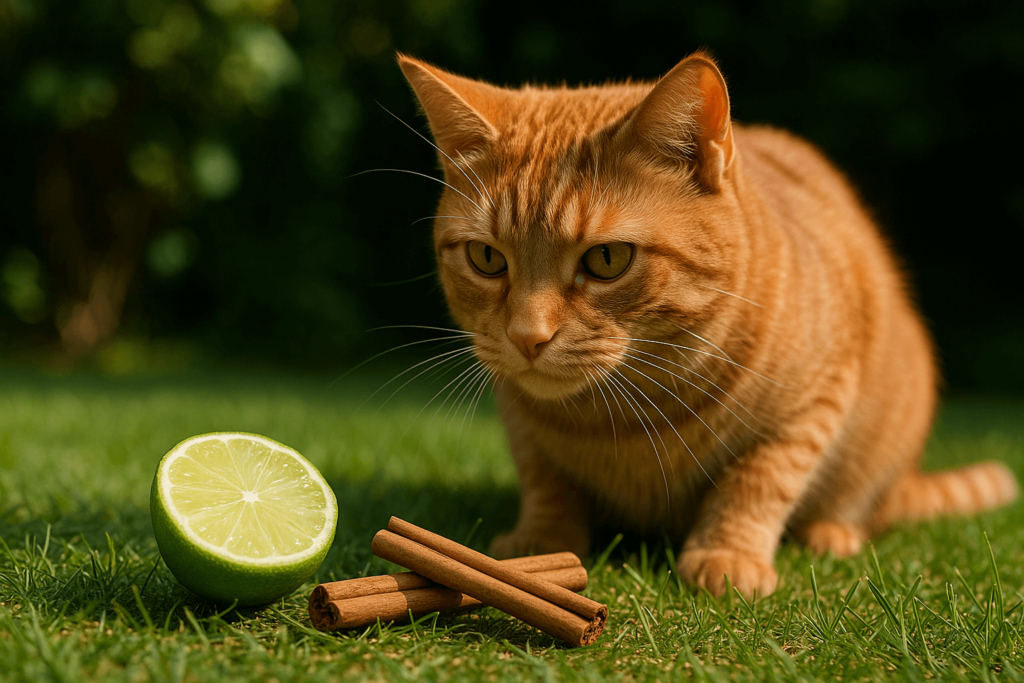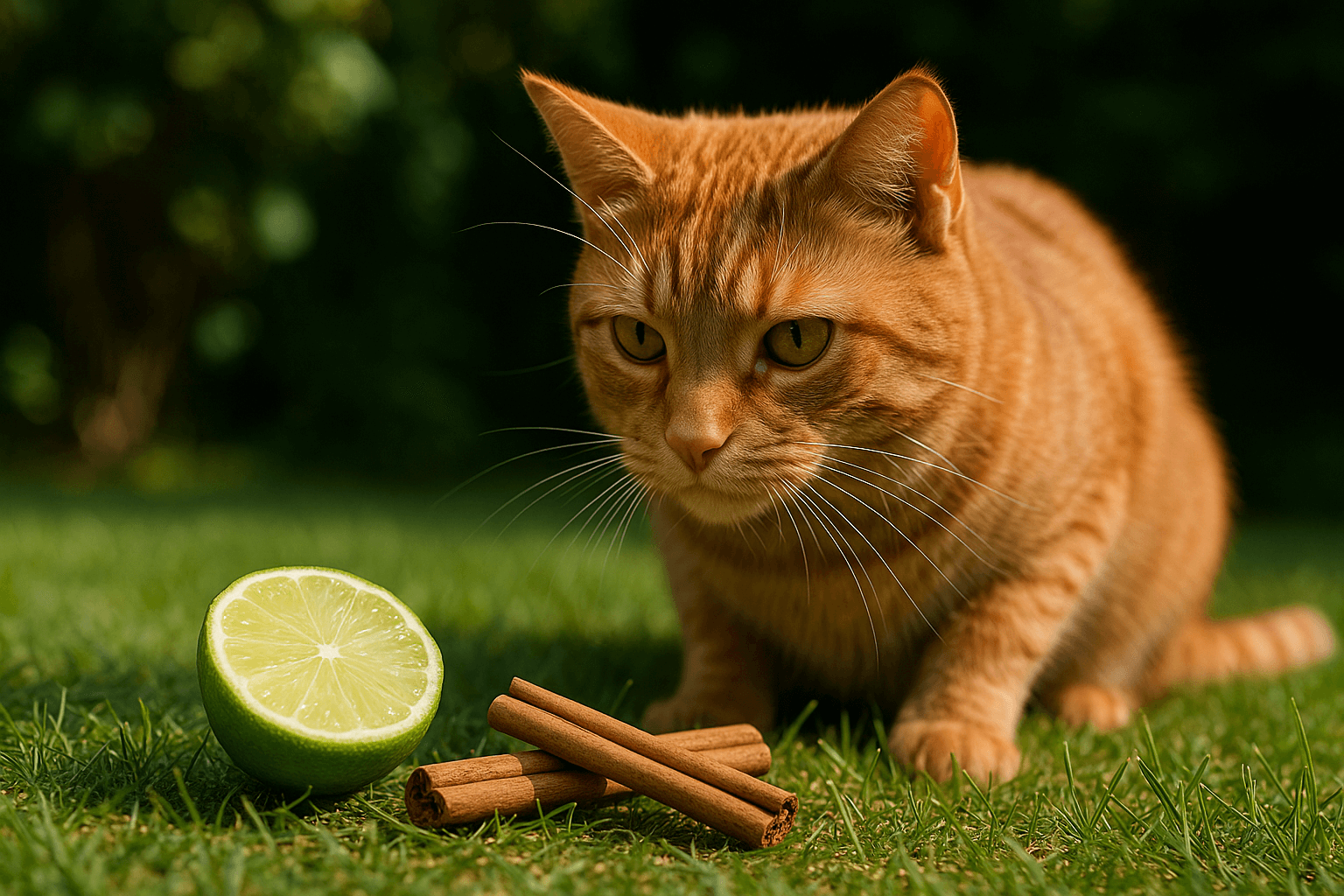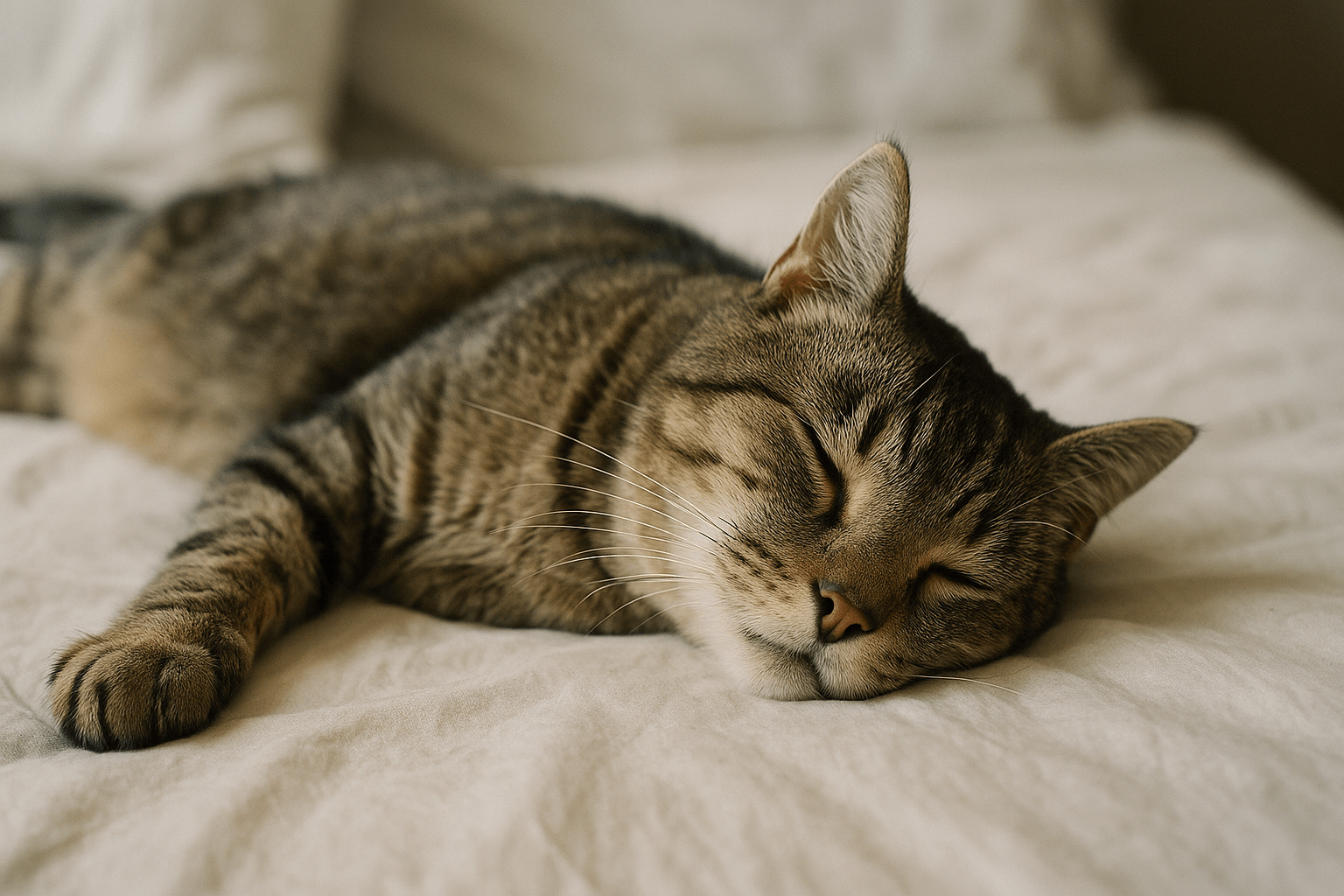Natural Cat Deterrent: 7 Proven Ways to Keep Cats Away Without Harm
Cats are curious, intelligent, and sometimes… inconvenient. Whether they’re digging in your garden, perching on your kitchen counter, or claiming your favorite chair as their throne, their instincts can clash with your home’s peace. The good news? You don’t need harsh sprays, electric mats, or yelling to stop them. Natural cat deterrents work — gently, effectively, and humanely. This guide reveals the science-backed, pet-safe methods that actually work, helping you protect your space while respecting your feline’s nature.
Why Natural Deterrents Work Better Than Chemicals
Cats rely heavily on their senses — especially smell and touch — to navigate their world. Harsh chemicals may startle them briefly, but they often lead to stress, avoidance of entire areas, or even aggression. Natural deterrents, by contrast, work with feline biology, not against it.
Safe for Pets and People:
Natural ingredients like citrus, lavender, and vinegar pose no toxic risk to cats, children, or other pets.Non-Irritating to Skin and Paws:
Unlike sticky tapes or electric mats, natural solutions don’t cause discomfort or injury.Environmentally Friendly:
No synthetic chemicals mean no runoff into soil or water systems.Long-Term Effectiveness:
Cats adapt quickly to repeated stimuli — natural scents, when rotated, remain effective longer.Supports Positive Behavior:
Instead of punishment, natural deterrents guide cats toward preferred alternatives.
By choosing natural methods, you’re not just keeping cats out of trouble — you’re building a calmer, more respectful coexistence.

The Top 5 Natural Cat Deterrents That Actually Work
Not all home remedies are created equal. Some work for a day. Others? They’re backed by feline behavior science. Here are the five most effective natural deterrents, tested and trusted by cat owners and experts alike.
Citrus Peels or Essential Oils (Orange, Lemon, Lime):
Cats strongly dislike the scent of citrus. Place fresh peels near problem areas or dilute a few drops of essential oil in water and spray lightly (never directly on cats).White Vinegar Solution:
A 1:1 mix of vinegar and water sprayed on surfaces creates a sharp odor cats avoid. It’s odorless to humans once dry.Coffee Grounds:
Used coffee grounds spread around garden beds or flower pots act as both a scent and texture deterrent. Bonus: they enrich your soil.Lavender or Rosemary Plants:
These aromatic herbs are pleasant to humans and repulsive to cats. Plant them near entry points or place dried bundles in strategic spots.Double-Sided Tape or Aluminum Foil:
While not a scent, the sticky or crinkly texture under paws is instinctively unpleasant. Use temporarily until your cat learns the boundaries.
These methods aren’t magic — they’re behavioral nudges. Combine them with positive reinforcement for best results.
Check this guide 👉Cat-Safe Ant Repellent: Best 7 Expert Tips!
Check this guide 👉Cat Behaviorist Training: Best 7 Expert Tips!
Check this guide 👉What Is a Cat Behaviorist? Best 7 Expert Tips!
| Natural Deterrent Method | How It Works & Best Use |
|---|---|
| Citrus Scents | Cats avoid strong citrus odors. Use peels or diluted essential oils on countertops, window sills, or garden edges. |
| White Vinegar Spray | A 1:1 vinegar-water mix deters cats with its sharp smell. Ideal for furniture legs, door frames, and baseboards. |
| Coffee Grounds | Used grounds repel cats from soil and flower beds. Safe for plants and adds nutrients as they decompose. |
| Lavender or Rosemary | Plant these herbs near entry points. Their strong fragrance is calming to humans but off-putting to cats. |
| Double-Sided Tape or Foil | Place on surfaces cats jump on. The sticky or crinkly sensation creates immediate negative feedback without harm. |
How Cats Use Their Senses to Avoid Unwanted Areas
Understanding how cats perceive the world is key to choosing the right deterrent. They don’t “know” you dislike their behavior — they react to sensory cues you provide.
Smell is Their Primary Language:
Cats have over 200 million odor sensors in their noses — five times more than humans. A faint citrus scent is overwhelming to them.Texture Matters More Than You Think:
Soft carpets invite scratching; sticky or uneven surfaces trigger avoidance. Texture-based deterrents work because they feel “wrong.”Sound Can Be a Powerful Cue:
The crinkle of foil or the rustle of plastic bags mimics the sound of a predator moving — triggering instinctive flight.Visual Cues Influence Behavior:
Bright reflections (like hanging CDs) or sudden movements (motion-activated sprinklers) can startle and redirect.Routine and Consistency Build Learning:
Cats learn through repetition. A single spray won’t stick — daily application for 7–10 days creates lasting association.
When you align your deterrent strategy with how cats experience the world, you stop fighting their instincts — and start guiding them.
Common Mistakes When Using Natural Deterrents
Even the best tools fail when used incorrectly. Avoid these five common errors that undermine your efforts.
Using Too Little:
A single peel or one-time spray won’t make a difference. Consistency over 7–10 days is critical for behavioral change.Applying Directly to Skin or Fur:
Never spray citrus or vinegar on your cat. It can irritate eyes, nose, and sensitive skin.Ignoring the Root Cause:
If your cat is scratching the couch, it’s not “being bad” — it’s seeking texture, height, or scent marking. Offer an alternative.Relying on One Method Only:
Cats adapt. Rotate deterrents weekly — citrus one week, foil the next — to prevent habituation.Giving Up Too Soon:
Behavioral change takes time. Don’t expect overnight results. Patience is your most powerful tool.
Success isn’t about perfection — it’s about persistence. Small, consistent actions yield lasting results.
Where to Apply Natural Deterrents for Maximum Effect
Not all areas need the same solution. Target your efforts where your cat’s behavior causes the most disruption.
Kitchen Counters:
Use citrus spray or double-sided tape along edges. Cats jump up for warmth, curiosity, or food scraps.Garden Beds and Flower Pots:
Spread coffee grounds or plant lavender around the perimeter. Avoid placing plants cats love (like catnip) nearby.Furniture Legs and Cushions:
Lightly spray vinegar solution or place aluminum foil temporarily under cushions to discourage lounging.Doors and Entryways:
Place dried rosemary bundles or citrus peels near doors cats try to sneak through.Windowsills and Balconies:
Hang reflective objects (CDs, wind chimes) or use motion-activated sprinklers to deter climbing and perching.
Focus on high-traffic zones first. Once behavior shifts, you can reduce application frequency.
Combining Natural Deterrents with Positive Reinforcement
Deterrence alone isn’t enough. To truly change behavior, pair avoidance with attraction.
Offer a Scratching Post Near the Couch:
Place a sisal post within 2 feet of where your cat scratches. Reward with treats when they use it.Create a Cat-Friendly Zone:
Designate a corner with a bed, toys, and a window view. Make it more appealing than your counter.Use Treats and Playtime:
Reward your cat every time they choose the right spot. Positive reinforcement builds lasting habits.Rotate Toys and Deterrents Weekly:
Keep things novel. Cats lose interest quickly — change the scent, texture, or location to stay ahead.Avoid Punishment:
Yelling or spraying water increases anxiety. It damages trust. Focus on redirection, not correction.
The goal isn’t to scare your cat — it’s to teach them where they want to be.
When to Seek Professional Help
Sometimes, despite your best efforts, a cat’s behavior persists. This may signal deeper issues.
Excessive Scratching or Digging:
Could indicate anxiety, boredom, or medical discomfort like arthritis.Urinating Outside the Litter Box:
This is often a stress response — not a territorial act. Rule out UTIs or litter aversion first.Aggression Toward Family Members:
May stem from fear, past trauma, or lack of stimulation.Destructive Behavior After a Change:
Moving, new pet, or loss of a companion can trigger stress behaviors.No Improvement After 3 Weeks:
If natural deterrents and enrichment haven’t helped, consult a certified cat behaviorist or veterinarian.
You’re not failing — you’re learning. Professional guidance can uncover hidden causes and restore harmony.
FAQ: Natural Cat Deterrents Answered
Is citronella safe for cats?
No. Citronella oil is toxic if ingested or applied to skin. Avoid it. Stick to food-grade citrus peels or diluted orange/lemon oil only.
Can I use pepper spray on cats?
Never. Even “natural” pepper sprays can cause eye damage, respiratory distress, and trauma. It’s cruel and illegal in many areas.
Do ultrasonic devices work?
Some cats are sensitive, but many ignore them. They’re inconsistent and can stress other pets. Use sparingly as a last resort.
How long do natural deterrents last?
Sprays last 1–3 days. Peels and plants last 1–2 weeks. Reapply after rain or cleaning. Rotate methods to maintain effectiveness.
Will my cat stop scratching if I use deterrents?
Not entirely — and they shouldn’t. Scratching is natural. The goal is to redirect it to appropriate surfaces, not eliminate it.
Embrace Their Nature — Without Losing Your Home
Cats don’t scratch, dig, or jump because they’re trying to annoy you. They do it because it’s who they are. Your job isn’t to suppress their instincts — it’s to channel them. With natural deterrents, you’re not building walls. You’re creating boundaries that honor both your cat’s needs and your own peace. A little vinegar, a few citrus peels, a well-placed post — these small choices add up to a harmonious home. You don’t need to win a battle. You just need to understand the game. And when you do? Your cat will thank you — with purrs, not paw prints.
Why Is My Cats Second Eyelid Showing? Best 7 Expert Tips! Understand causes, health signs, and how to respond when your cat’s third eyelid becomes visible.
How Do I Know If My Cat Died Peacefully? Best 7 Expert Tips! Discover the quiet signs of a peaceful feline passing and find comfort in their final moments.
Cat Allergy Eyes: Best 7 Expert Tips! Discover why your eyes react to cats and learn proven strategies for relief—without giving up your feline friend.
Why Do Abyssinian Cat Colors Matter? Best 7 Expert Tips! Discover the genetics, rare hues, and care secrets behind Abyssinian coat colors for a healthier, happier cat.





